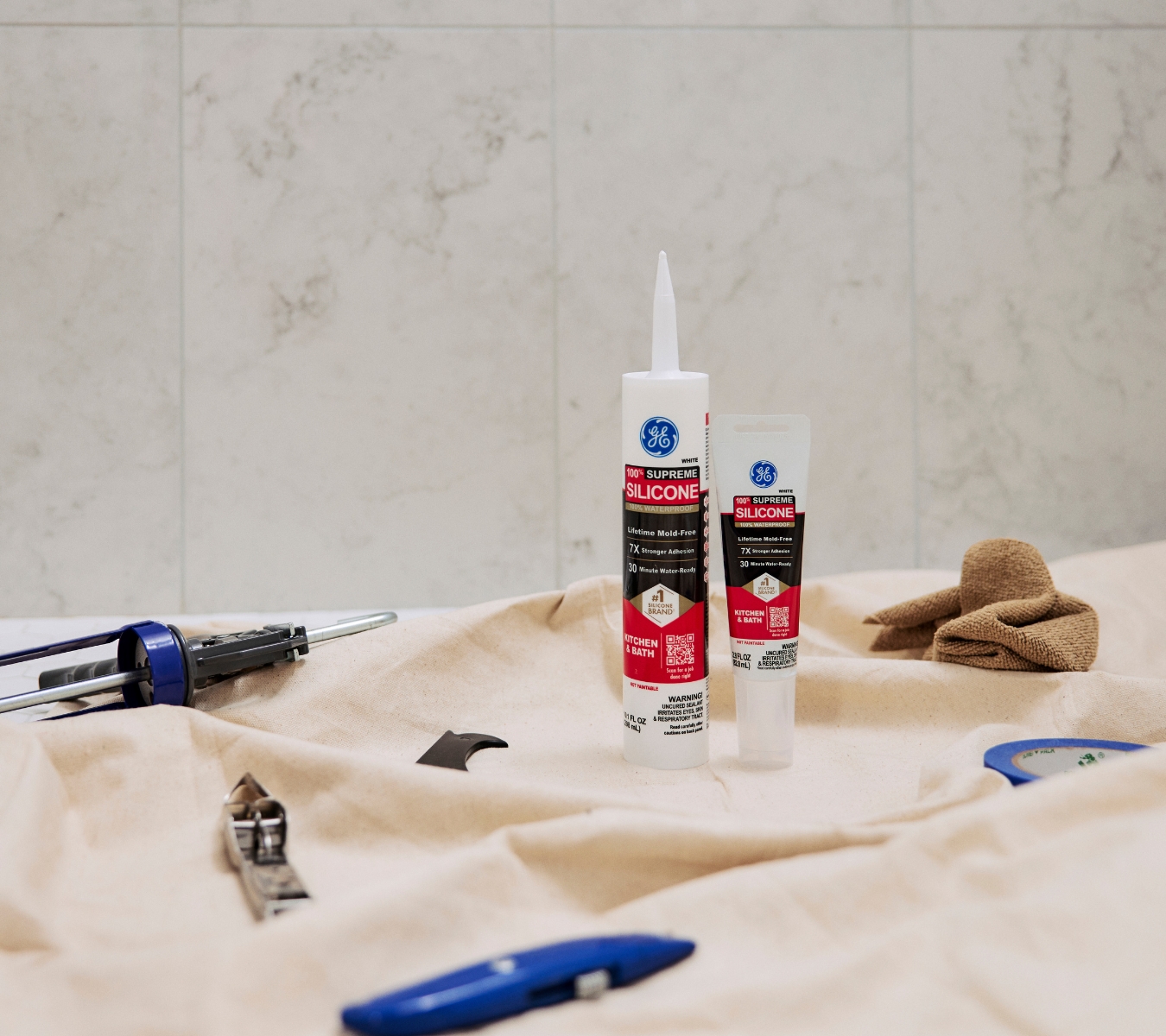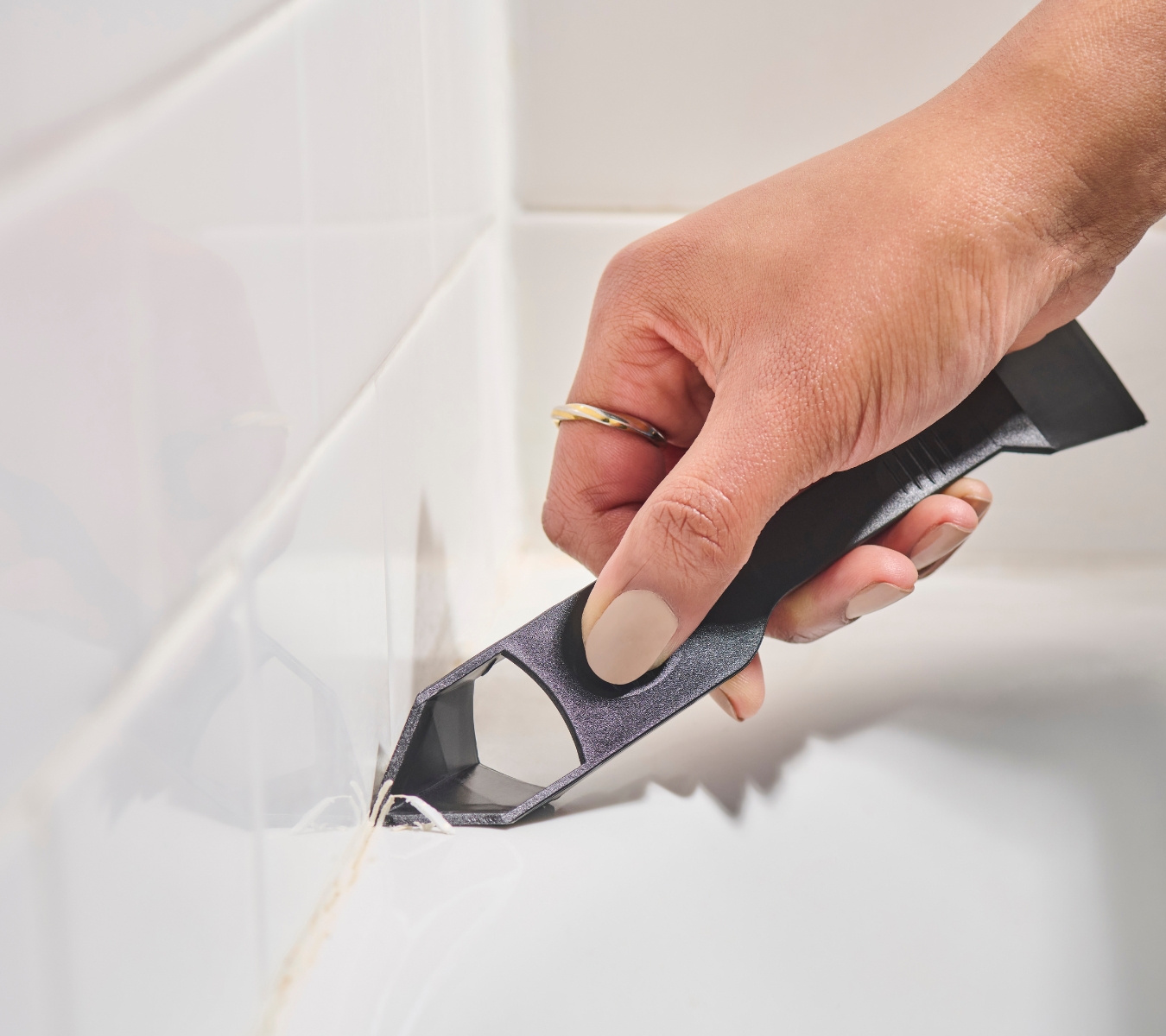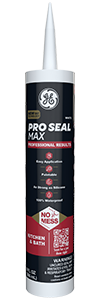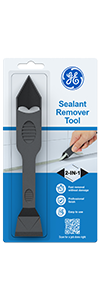Bathrooms are among the toughest environments for sealants because every joint is exposed to water, cleaning products, and daily use. While acrylic caulk may be inexpensive and easy to apply, it’s not designed to handle constant moisture or movement. For long-lasting performance, the preferred plumbing sealant is silicone, which stays flexible, waterproof, and mold-resistant even in areas constantly exposed to moisture and movement.
For professionals, the right plumbing sealant can mean the difference between a reliable, watertight installation and callbacks to unsatisfied customers. For wet-area performance, GE Supreme Silicone Kitchen & Bath Sealant is the top choice.
Comparing silicone vs. acrylic caulk: key differences
When evaluating sealants for plumbing and bathroom work, the performance contrast between silicone and acrylic caulk is significant.
As a bathroom and sink sealant, silicone handles the challenges of bathroom environments where other products fail. Silicone remains elastic for its entire service life, accommodating up to ±50% joint movement without breaking the bond, and allows it to move with tubs, sinks, and counters. This flexibility is essential for maintaining a watertight seal in joints constantly stressed by temperature changes and daily use. Acrylic caulk, in contrast, hardens after curing and becomes brittle, so even small shifts in a joint can cause cracks or gaps to form.
Silicone also forms a truly waterproof barrier, protecting against leaks that can damage underlying structures. Acrylic is only temporarily water-resistant and degrades quickly when exposed to standing water or high humidity, making it unsuitable as a shower, tub, or sink sealant.
Another major advantage is silicone’s resistance to mold and mildew, which is ideal for high-humidity spaces where hygiene and appearance matter. Acrylics tend to shrink, peel, or discolor after repeated scrubbing and are not mold- and mildew-resistant.
In addition, professional-grade silicones bond securely to almost any substrate you’ll find in residential homes, including:
- Porcelain
- Ceramic
- Glass
- Metal
For plumbers, choosing silicone reliably results in fewer callbacks and reduced maintenance.
GE products plumbers can trust

For professionals, the right plumbing sealant can mean the difference between a reliable, watertight installation and callbacks to unsatisfied customers. For wet-area performance, GE Supreme Silicone Kitchen & Bath Sealant is the top choice. This 100% silicone formula provides a permanently waterproof and flexible seal that stands up against constant exposure to water, steam, and cleaning products. It resists mold and mildew growth for a cleaner, longer-lasting finish, while adhering strongly to common bathroom materials like porcelain, glass, and ceramic. Once cured, it remains elastic and durable, maintaining its bond even in areas with frequent expansion and contraction, such as around sinks and tubs.
When a paintable option is needed, GE Pro Seal Max Kitchen & Bath offers a professional-grade hybrid solution. It combines the toughness and flexibility of silicone with the paintability of acrylic latex, ideal for trim, cabinetry, or mixed-material joints. It also resists shrinkage and abrasion, ensuring a smooth, even bead that holds up over time.
Application tips for sealing sinks and tubs

Getting a perfect, watertight seal around sinks and tubs starts with proper surface preparation. Begin by removing any existing caulk or sealant using the GE Sealant Remover Tool. This step ensures a clean bonding surface and prevents old material from interfering with adhesion. Once the old sealant is removed, wipe the joint clean with a mild cleaner and allow it to dry completely. Moisture or residue can compromise even the best sealant.
Cut the nozzle of your sealant tube at a 45-degree angle to control bead size, then apply a steady, even line along the joint. Work in manageable sections to avoid skin-over before tooling. Immediately smooth the bead with a putty knife or the GE Sealant Smoothing Tool to press the silicone into the joint and create a clean, uniform finish.
Plumbers have different approaches to sealing the base of toilets. Some prefer a fully sealed look, while others follow code recommendations and leave a small gap, so any future leaks can be detected early. GE recommends adhering to applicable plumbing codes and exercising professional judgment on a case-by-case basis. Lastly, avoid exposing the seal to water until it has fully cured, per the product label. For silicone, that typically means waiting at least 24 hours. Taking time to prep, apply, and cure properly will save you hassle and costs down the road.
To get GE Sealants’ products for your professional bathroom installs, visit these fine retailers in the U.S. or Canada.


